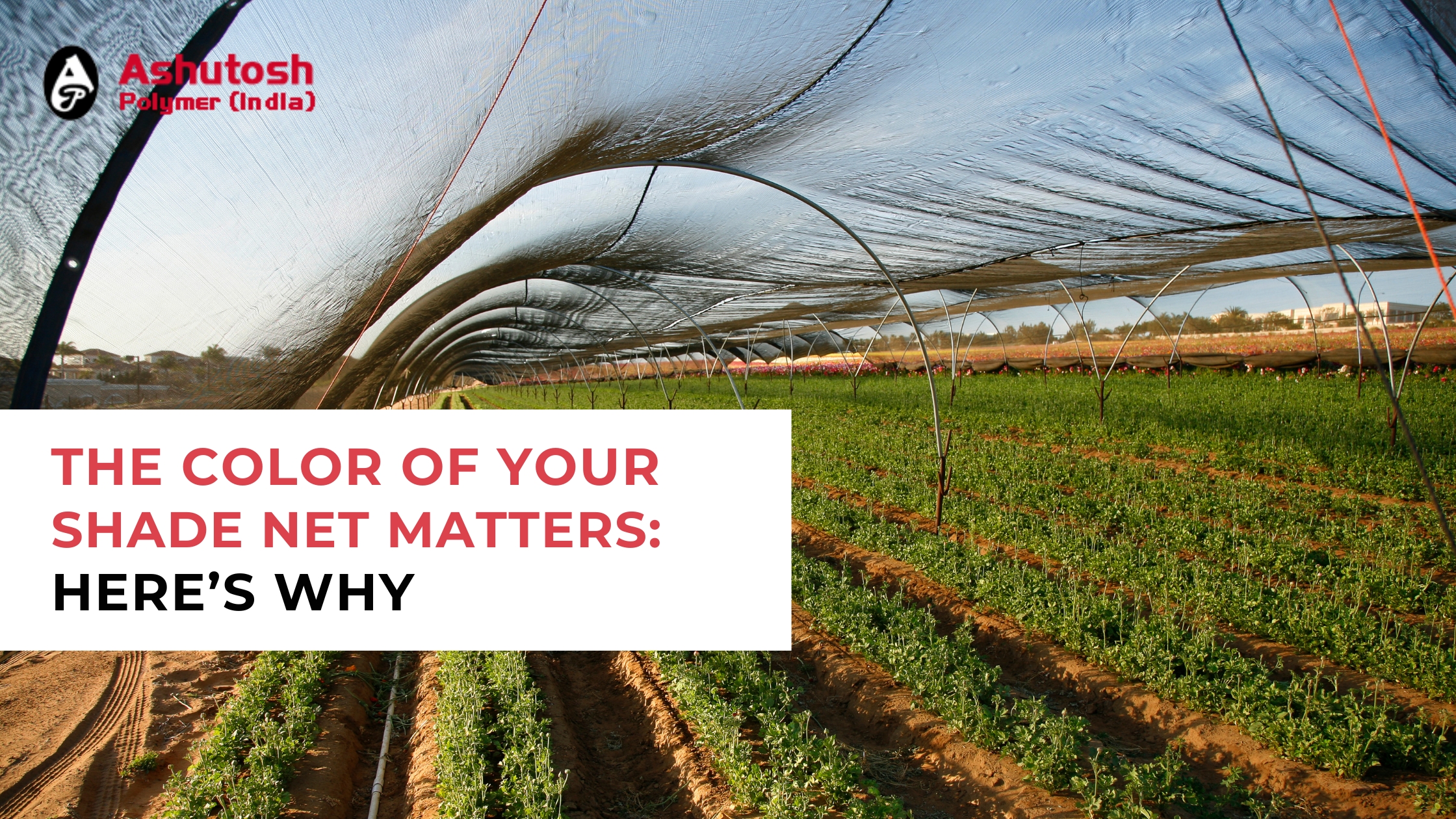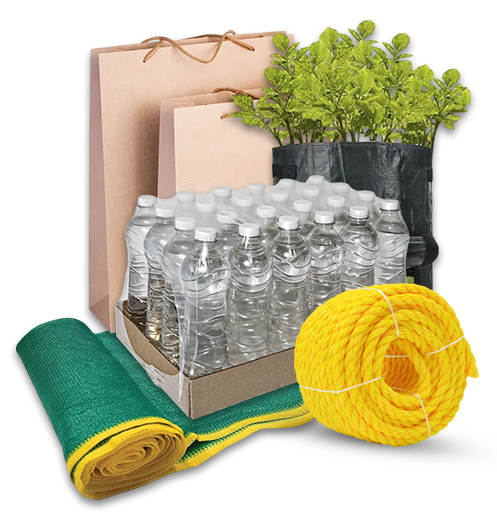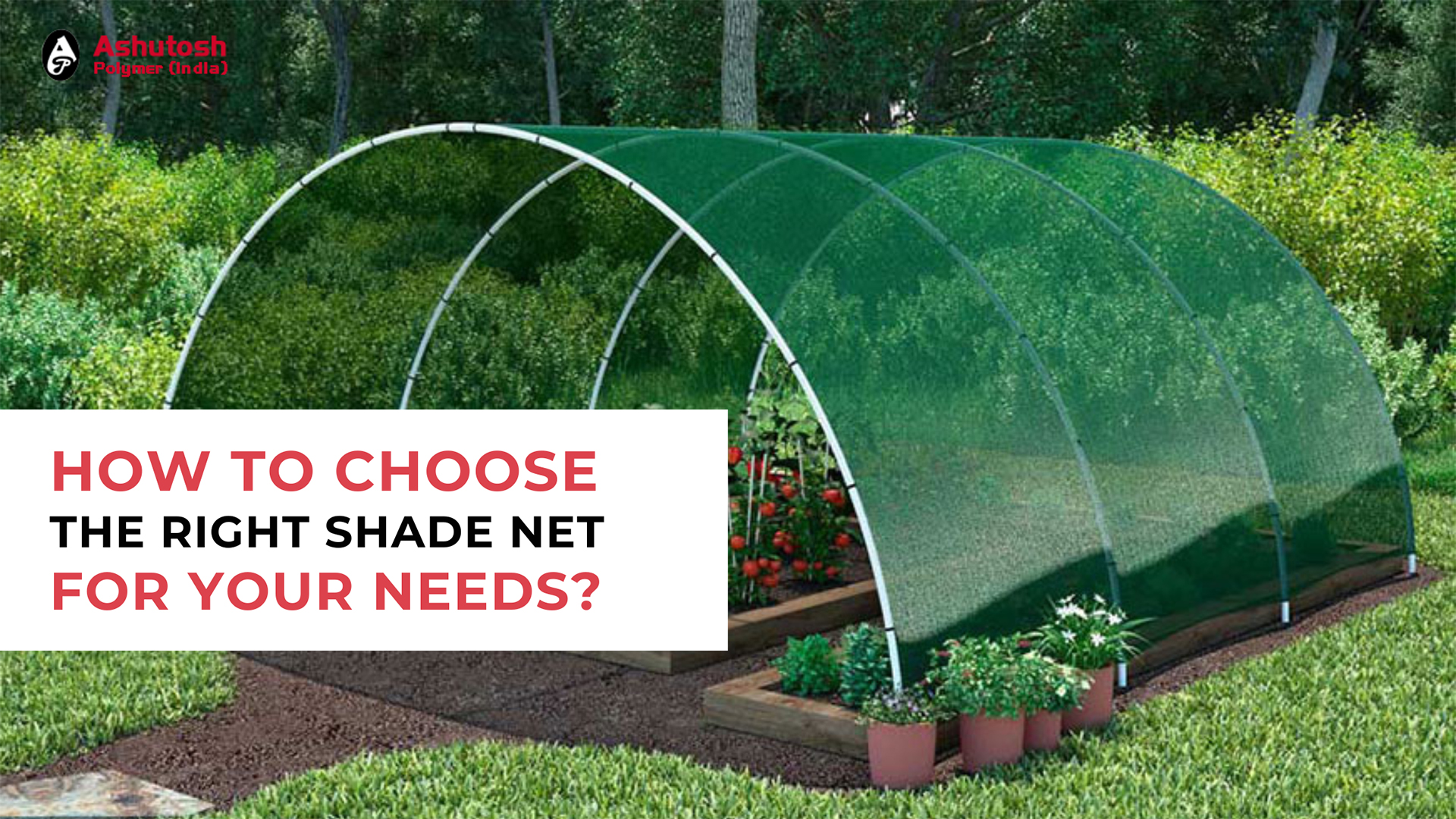
The Color of Your Shade Net Matters: Here's Why
Shade nets are an essential tool for gardeners and farmers. They can be used to protect plants from the sun harsh rays, reduce heat stress, and create a more comfortable environment for people to work and play.
Different colors of shade nets offer different benefits. Here is a detailed explanation of why different shades are useful and what properties they exhibit:
White Shade Net
White shade nets are the least effective at blocking light and heat, but they are also the most affordable. They are a good choice for plants that need full sun, such as tomatoes, peppers, and cucumbers. White shade nets can also be used to protect people from the sun and reduce heat stress in greenhouses and outdoor living spaces.
Properties:-
Sunlight blockage: 50-60%
Heat blockage: 30-40%
Where to use: Good for plants that need full sun, such as tomatoes, peppers, and cucumbers. It can also be used to protect people from the sun and reduce heat stress in greenhouses and outdoor living spaces.
Green Shade Net
Green shade nets are a good all-purpose shade net. They block about 70-80% of light and 50-60% of heat. Green shade nets are a good choice for a variety of plants, including fruits, vegetables, flowers, and herbs. They can also be used to protect people from the sun and reduce heat stress in greenhouses and outdoor living spaces.
Properties:-
Sunlight blockage: 70-80%
Heat blockage: 50-60%
Where to use: A good all-purpose shade net. Good for a variety of plants, including fruits, vegetables, flowers, and herbs. It can also be used to protect people from the sun and reduce heat stress in greenhouses and outdoor living spaces.
Red Shade Net
Red shade nets are less effective at blocking light and heat than green shade nets, but they are more effective at attracting pollinators. Red shade nets are a good choice for flowering plants and vegetables that need pollinators to produce fruit, such as tomatoes, peppers, and cucumbers. Red shade nets can also be used to protect people from the sun and reduce heat stress in greenhouses and outdoor living spaces.
Properties:-
Sunlight blockage: 60-70%
Heat blockage: 40-50%
Where to use: Less effective at blocking light and heat than green shade nets, but more effective at attracting pollinators. Good for flowering plants and vegetables that require pollinators to produce fruit, such as tomatoes, peppers, and cucumbers. It can also be used to protect people from the sun and reduce heat stress in greenhouses and outdoor living spaces.
Black Shade Net
Black shade nets are the most effective at blocking light and heat. They block about 90-95% of light and 60-70% of heat. Black shade nets are a good choice for plants that require partial shade or full shade, such as ferns, orchids, and succulents. Black shade nets can also be used to protect plants from sunburn and other heat stress in hot climates. Black shade nets can also be used to reduce heat stress in greenhouses and outdoor living spaces.
Properties:-
Sunlight blockage: 90-95%
Heat blockage: 60-70%
Where to use: The most effective at blocking light and heat. Good for plants that need partial shade or full shade, such as ferns, orchids, and succulents. It can also be used to protect plants from sunburn and other heat stress in hot climates. It can also be used to reduce heat stress in greenhouses and outdoor living spaces.
Blue Shade Net
Blue shade nets are similar to green shade nets in terms of light and heat blockage, but they are more effective at reflecting UV rays. Blue shade nets are a good choice for protecting plants from sunburn and other UV damage. Blue shade nets can also be used to reduce heat stress in greenhouses and outdoor living spaces.
Properties:-
Sunlight blockage: 60-70%
Heat blockage: 40-50%
Where to use: Similar to green shade nets in terms of light and heat blockage, but more effective at reflecting UV rays. Good for protecting plants from sunburn and other UV damage. It can also be used to reduce heat stress in greenhouses and outdoor living spaces.
Yellow Shade Net
Yellow shade nets are similar to white shade nets in terms of light and heat blockage, but they are more effective at attracting beneficial insects. Yellow shade nets are a good choice for plants that need protection from pests. Yellow shade nets can also be used to reduce heat stress in greenhouses and outdoor living spaces.
Properties:-
Sunlight blockage: 50-60%
Heat blockage: 30-40%
Where to use: Similar to white shade nets in terms of light and heat blockage, but more effective at attracting beneficial insects. Good for plants that need protection from pests. It can also be used to reduce heat stress in greenhouses and outdoor living spaces.
Dark Green Shade Net
Dark green shade nets are similar to green shade nets in terms of light and heat blockage, but they are more effective at reducing glare. Dark green shade nets are a good choice for use in greenhouses and other areas where glare is a problem.
Properties:-
Sunlight blockage: 70-80%
Heat blockage: 50-60%
Where to use: Similar to green shade nets in terms of light and heat blockage, but more effective at reducing glare. Good for use in greenhouses and other areas where glare is an issue.
Factors to consider when choosing the color of a shade net
- Climate and Sunlight Intensity: Light colored shade nets are suitable for hot and sunny climates, while darker colored shade nets are more suitable for cooler climates.
- Type of Plants: Light-requiring plants, such as tomatoes, and eggplants, that thrive in high sunlight conditions, require a shade net with a lower percentage of shade (30-50%) to allow for adequate light penetration and promote optimal growth. Shade-loving plants, such as ferns, that prefer partial shade or protection from intense sunlight, require a shade net with a higher percentage of shade (70-90%) to reduce direct sunlight exposure and create a cooler, more humid environment.
- Aesthetic Considerations: The color of the shade net can significantly impact the overall ambiance of the space it covers. Lighter colors, create a more airy and spacious feel, making them suitable for areas with limited space. Darker colors, such as black or green, can provide a more intimate and secluded atmosphere, making them ideal for creating a cozy outdoor retreat or enhancing privacy.
- Durability and Material: To ensure long-lasting performance and protection from the elements, choose a shade net with UV protection to prevent fading and degradation over time. Additionally, opt for a shade net with a high knit density to provide resistance to tearing or wear.
Conclusion
Different colors of shade nets offer different benefits. By choosing the right color of shade net, you can protect your plants, reduce heat stress, and improve the appearance of your garden or greenhouse.




